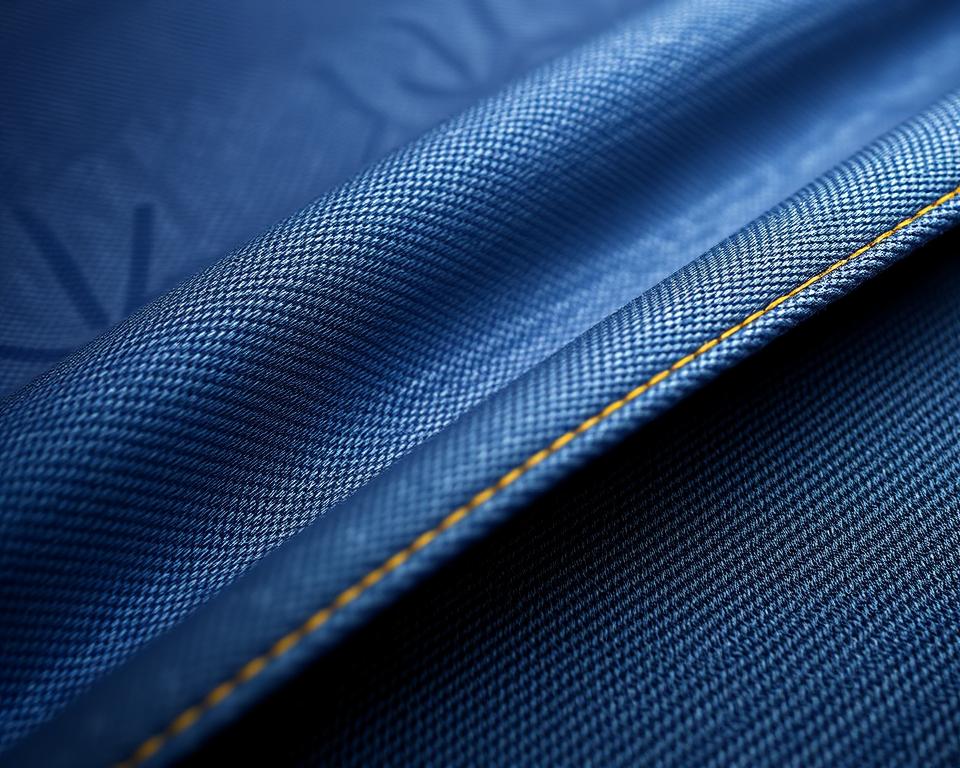Your Guide for Superior denim Edge-to-Edge Textile
Ever pondered the reason certain pants seem like they’re built for endurance a lifetime? It’s all about the elements and craftsmanship. For example, the rising movement of superior selvedge. This isn’t just any material—it’s a testament to excellence and heritage.
Currently, increasingly more individuals are turning to these everlasting fabrics for their sturdiness and classic selvedge denim by the yard appeal. Whether you’re a do-it-yourself sewist or a denim lover, there’s something special about working with superior natural fiber and stitching. It’s not just about constructing trousers; it involves producing a legacy.
Within Core Fabrics, we’ve selected a collection of 14.25oz eco-friendly cotton and elastic options. These materials are tailor-made for everything from raw jeans to high-fashion jacket blueprints. Prepared to dive into the universe of exceptional fabrics? Let’s jump right in.
Understanding Denim Selvedge Fabric?
Why do particular jeans distinguish themselves with their signature, self-finished borders? The key lies in the selvedge denim, a premium material known for its robustness and retro charm. In contrast to conventional textiles, such material is produced using traditional methods that have endured through ages.
The Definition of Selvedge Denim
Selvedge denim is produced with retro shuttle looms, which yield slender widths of about 30-35 inches. These looms weave the material in a method that delivers self-finished seams, often marked by a characteristic red line. Such a process guarantees the material is tightly woven and highly durable.
Current looms, alternatively, generate broader material but fall short of the comparable degree of craftsmanship. The imperfections in selvedge, like twists in the leg or irregular surfaces, are celebrated as elements of its beauty. This philosophy, termed “wabi-sabi”, honors the beauty of organic flaws.
How Selvedge Denim Is Made
The manufacturing of selvedge denim entails a exacting process. Shuttle looms interlace the horizontal threads alternately, creating a compact and resilient material. Unlike modern methods with contemporary machines, which focus on quick production and efficiency over craftsmanship.
Brands like Karson Denim preserve time-honored Japanese weaving techniques from the 1990s. They intentionally include anomalies to preserve the authenticity of the material. Each piece is graded on a four-point system, confirming it fulfills the top criteria of excellence.
| Characteristic | Selvedge Denim | Modern Denim |
|---|---|---|
| Span | 30-35 inches | 60+ inches |
| Fabrication Method | Shuttle Loom | Modern Loom |
| Texture | Uneven, Imperfect | Uniform |
| Durability | Exceptional | Standard |
“The charm of selvedge is found in its flaws—each irregularity speaks of skill and legacy.”
The Background of Selvedge Denim
Evolving from simple roots to global acclaim, the story of these materials is rich and motivational. Initially designed as durable workwear in 17th-century France evolved into a mark of timeless style and craftsmanship.
Historical Roots
The foundation of this textile dates back to Nîmes, France, where it was referred to as “serge de Nîmes.” First intended for the working class, it was crafted out of hardwearing cotton and thread. Its durability made it a favorite among workers during the historic Gold Rush.
During the twentieth century, it had transformed into a cornerstone for jeans. The shuttering of the Cone Mills White Oak factory served as a catalyst. This shift enabled Japanese craftsmen to revive classic fabric-making practices.

Advancements in Production
After World War II, Japan developed a deep appreciation for retro American culture. Artisans revitalized classic looms to manufacture true reproductions. This dedication to craftsmanship guaranteed the continuance of selvedge as a unique product.
Today, breakthroughs from Italy and Turkey have brought forth sustainable mixtures and flexible options. These advancements have expanded the allure of this everlasting textile. Here at Core Fabrics, we procure internationally, from Montréal to Asia, to deliver to you the finest excellence.
“The legacy of selvedge is a celebration of the enduring value of quality and tradition.”
Why Choose Selvedge Denim?
What makes selvedge denim stand out in the realm of premium fabrics? Its unique qualities and exceptional longevity have made it beloved among aficionados and creatives alike. Whether you’re crafting trousers or a tailored jacket, this textile delivers a mix of tradition and updated style.
Characteristic Features of Selvedge
Selvedge denim is renowned for its tight weave, which enhances tear resistance and color fading characteristics. Unlike standard materials, selvedge denim material is produced using time-honored shuttle looms, yielding a denser and more durable fabric. Such a process guarantees that each piece has a singular finish and personality.
Key features include:
- Hairy, rigid raw denim juxtaposes against pre-washed comfort stretches.
- The sanforization process ensures predictable sizing, while untreated fabrics provide a unique shrinkage journey.
- Variants include 9.5oz Eco Finish to 14.25oz Organic, suited for diverse applications.
Robustness and Endurance
One of the most remarkable aspects of selvedge denim is its enduring nature. The firm interlacing not only increases durability but also allows for unique fading patterns over time. This makes it a treasured choice for those seeking enduring style.
Key points to consider:
- 12-14oz weights are ideal for structured jackets and jeans that soften with age.
- The 14.25oz True Indigo option is highly favored for enduring jeans.
- Eco-friendly options, like recycled cotton and indigo blends, add sustainability to your wardrobe.
At Core Fabrics, our collection includes a variety of options to suit your needs. Spanning from raw finishes to sanforized treatments, each selection is designed for superior quality and value.
Comparing Selvedge and Wide Denim
For making durable and stylish garments, the decision of textile is pivotal. Two popular options are selvedge and wide denim, each with unique characteristics. Understanding their differences can help you choose the best option for your creation.
Key Differences in Weaving Techniques
Selvedge denim is produced using classic shuttle looms, producing limited spans of 30-35 inches. This striped selvedge denim fabric method creates secure finishes, often featuring a signature red line. Conversely, wide denim employs advanced projectile looms, resulting in widths of 60 inches or more.
Shuttle looms are slower, producing about 3 meters per minute, while contemporary projectile looms achieve up to 30m per minute. The variance in production speed affects both the expense and the finish of the end result.
Advantages and Disadvantages
Selvedge denim is known for its premium quality and durability. Its narrow width renders it perfect for projects where exposed edges or decorative patches are required. However, it can be pricier, typically around $23 per meter.
Wide denim is more cost-effective, ranging at $8 per half-meter. Its broader span cuts down on scrap, well-suited to large projects like interior décor projects. However, it lacks the signature finished border of selvedge.
| Feature | Selvedge Denim | Wide Denim |
|---|---|---|
| Width | 30-35 inches | 60+ inches |
| Method | Classic Shuttle Loom | Projectile Loom |
| Production Speed | 3m/min | 30m per minute |
| Cost | $23/meter | $8/half-meter |
For structured edges, like those needed in Grainline Thayer jackets, selvedge is the preferred choice. For larger projects, wide denim offers better value and efficiency. Consider your project needs to make the best decision.
Maximizing Your Selvedge Denim
Utilizing superior fabrics can transform your sewing endeavors. Be it making trousers, jackets, or frocks, knowing how to measure, sew, and care for the material secures expert outcomes. Let’s explore ways to best utilize this classic material.
Yardage Needed for Jeans and Jackets
Determining the proper yardage is key to a successful project. Men’s jeans typically require roughly 3-3.3 yards, factoring in flaws and potential shrinkage. Trucker-style jackets generally demand about 3.3 yards, while skirts require only 2 yards.
Innovative layout techniques can mitigate fabric flaws. Instead of cutting around defects, consider integrating them into your design for a unique look.
| Garment | Fabric Needed |
|---|---|
| Jeans for Men | 3–3.3 yards |
| Work Jacket | 3.3 yards |
| Dress | 2 yards |
Advice for Sewing and Longevity
Using the right tools and techniques ensures a polished result. Choose #70-110 needles and machine attachments designed for heavy materials. For contrast stitching, Gütermann rPET thread is a reliable choice.
Additional advice includes:
- A tailor’s clapper helps deliver defined creases without unwanted shine.
- Our denim kits from Core Fabrics comprise topstitch thread, rivets, and 9mm jeans buttons to ensure a refined result.
- For structured edges, like those in jackets, selvedge is the preferred choice.
Correct care ensures your garments last longer. Limit washing and allow to air dry for optimal durability. With these tips, your projects will stand the test of time.
The Final Word
Using superior fabrics goes beyond mere durability—it’s about instilling personality. Selvedge denim embodies this principle, merging handcrafted appeal with robust strength. From jeans to tailored jackets, every stitch of this material conveys a narrative.
With Core Fabrics, unleashing your creative potential is effortless. Experience our swatch service to gauge texture and weight prior to purchase. Furthermore, take advantage of free shipping for orders above $150 USD in North America.
Future trends in cotton textiles include sustainable blends and retro washes. These trends offer new ways to add sustainability and style to your wardrobe.
Eager to explore top-tier textiles? Shop now and discover the value of crafting with purpose. Your next project could be a timeless piece that lasts for years to come.


